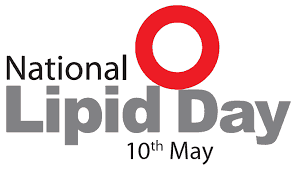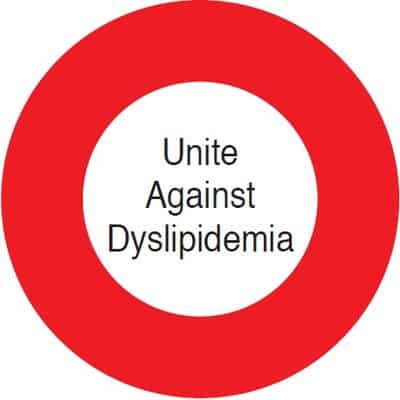National Lipid Day is on May 10th. On this day, try taking a walk, educate yourself on preventative measures and inform others. Share this by using #NationalLipidDay on social media.
Hyperlipidaemia – the problem and some solutions
In the USA, National Lipid Day is observed annually on May 10th. The purpose of the day is to bring awareness to dyslipidaemia. Dyslipidaemia is an abnormal amount of lipids (e.g. cholesterol and/or fat) in the blood. In developed countries, most dyslipidaemias are hyperlipidaemias; that is, an elevation of lipids in the blood. This is often due to diet and lifestyle. Dyslipidaemia is the major cause of cardiovascular disease.
Heart disease is the single biggest killer of Australians and is responsible for 31% of deaths globally. In fact, 51 Australians die from a heart attack each day. Each year, heart disease and stroke are responsible for more than 30,000 deaths and $3.1 billion in direct health costs, and their incidence is rising. 1 in 3 Australians are known to have high cholesterol. Unfortunately, people with high cholesterol do not usually exhibit any symptoms but are at a significantly higher risk of having a heart attack or stroke.
Much like high blood pressure, people who have high cholesterol (other names are hypercholesterolaemia, hyperlipidaemia, dyslipidaemia) do not usually have any symptoms.
Family history can be an important risk factor (familial hypercholesterolaemia). Even if this is the case it is still important to reduce your other modifiable risk factors as much as possible (as outlined in the rest of this article)
Strategies that can help include:
- Doing at least 30 to 45 minutes of moderate exercise 5 days a week (eg a brisk walk)
- Modifying your diet, making sure you have a diet which contains:
- plenty of fresh fruit and vegetables as well as wholegrain cereals
- a variety of protein sources including fish, lean meat and poultry, seafood, legumes, nuts and seeds
- reduced fat dairy sources such as low-fat milk, cheeses and yoghurts
- healthy fats such as avocados, olives and nuts.
See here for more information regarding high cholesterol:
https://www.heartfoundation.org.au/images/uploads/publications/NAHU-Cholesterol.pdf
Some people, however, cannot reduce their cholesterol with the above measures. In most cases they would be recommended to consider starting medication, such as a statin to help reduce their cholesterol.
Unfortunately, some people do experience side effects from taking statins. These can include muscle pain (rhabdomyolysis), gastric upset, diarrhoea, constipation, rash, headache, dizziness, mental confusion and forgetfulness.
At AusTrials we have been selected to study a new medication for those patients who should be on a statin (due to the high cholesterol and high risk of heart disease) but are unable to due to the side effects.
We are inviting patients who believe that they fit the above criteria to become involved in ground breaking research into proving that this new medication is just as effective, if not more effective than currently available therapies for cholesterol reduction.
If you have a history of cardiovascular disease, diabetes, stroke or at high risk for cardiovascular disease (for example, had a high calcium score on CT) and are unable to tolerate statins due to severe muscle pain or other side effects, you may be suitable for this study.
For more information regarding this trial please contact us at AusTrials on 07 3278 5255, or at this website: https://clear-au.researchstudytrialau.com/
Reducing your risk of heart disease
You can reduce your risk of heart disease by modifying certain risk factors, such as stopping smoking, reducing your risk of developing diabetes and reducing your blood pressure and cholesterol.
It can be tough trying to tackle all these factors all at once and you’d be forgiven for thinking it’s all just too hard, but even just modifying one of your risk factors can have a significant impact in improving your risk of heart disease down the track. Here are a few facts regarding modifiable risk factors:
- Quitting smoking
According to the World Health Organisation (WHO) there are immediate as well as long-term benefits to your health with smoking cessation.
- Within 20 minutes, your heart rate and blood pressure drop.
- Between 2-12 weeks, your circulation improves and your lung function increases.
- By 1 year, your risk of coronary heart disease is about half that of a smoker’s.
- At 5 years, your stroke risk is reduced to that of a non-smoker 5 to 15 years after quitting.
- And after 15 years, the risk of coronary heart disease is that of a non-smoker’s.
Even if you have developed smoking related health problems there are still benefits to quitting smoking:
- At about 30: gain almost 10 years of life expectancy.
- At about 40: gain 9 years of life expectancy.
- At about 50: gain 6 years of life expectancy.
- At about 60: gain 3 years of life expectancy.
- After the onset of life-threatening disease:
- rapid benefit, people who quit smoking after having a heart attack reduce their chances of having another heart attack by 50%.
There are a number of resources to help you on your journey to quitting. Try speaking with your GP or Pharmacist or take a look at online resources such as:
- initiatives.qld.gov.au
- org.au/Quitline
- Reducing your blood pressure
According to the Australian Heart Foundation
- Six million Australians have high blood pressure
- More than 2.7 million have high blood pressure that is not treated at all
- 1.4 million have high blood pressure that is treated but not controlled
High blood pressure has been nicknamed “the silent killer” as patients who have high blood pressure have no symptoms making it almost impossible to detect. It is recommended that all adult Australians should have their blood pressure checked by a doctor (usually their GP) at least every two years.
- Diabetes prevention
Most people know someone who has been affected by diabetes or suffering from the complications of uncontrolled diabetes. These could be heart attack, stroke, blindness, limb loss, chronic pain in their hands and feet.
The good news is that even if you are at risk of type 2 diabetes, this can be delayed and even prevented by:
- Maintaining a healthy weight
- Regular physical activity
- Making healthy food choices
- Managing blood pressure
- Managing cholesterol levels
- Not smoking or quitting if you do smoke.
Try this tool to see if you are at risk of developing diabetes:
If so, make an appointment to see your GP or health care provider. All it takes is a simple blood test to see if you are at risk.



